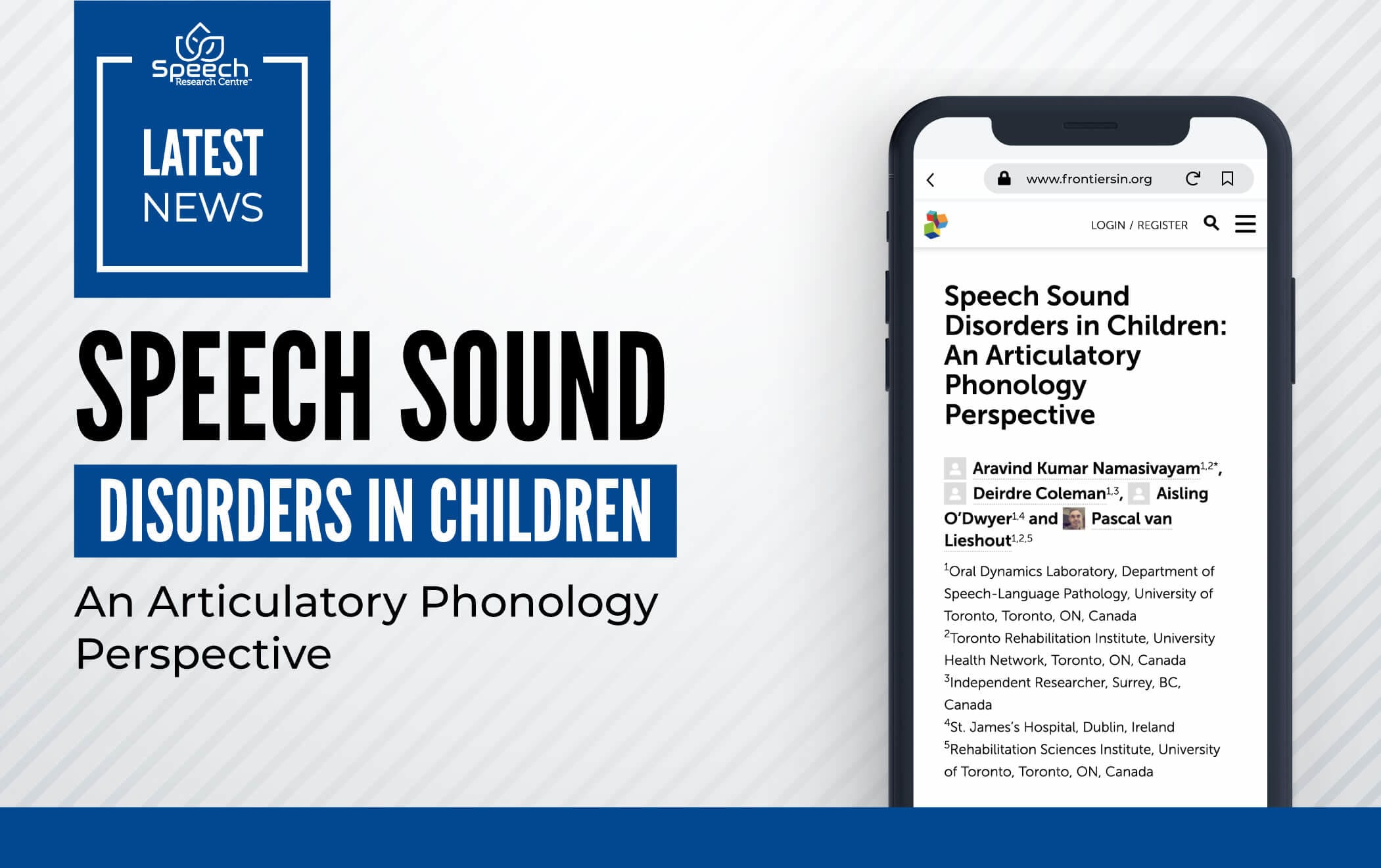
The recent publication, titled “Speech Sound Disorders in Children: An Articulatory Phonology Perspective” clearly resonates with many people as it was viewed more than 14000 times in the first 3 weeks of its publication (and 30,000 times in the first year).
The paper published in the prestigious Frontiers in Psychology journal - ranks in the 98th percentile of all Frontiers articles. The journal entry was submitted by Dr. Aravind Namasivayam, Dr. Pascal van Lieshout and colleagues from the Oral Dynamics Lab (Dept. of S-LP, U of T), and presents a theoretical concept with supportive empirical data and analysis that provides a foundation for approaching the assessment and treatment of SSDs as phenotypes of breakdowns in the interplays between various systems.
Mo Oshalla, SLP and Alum to the UofT SLP program commented…
“In our profession, there is this traditionalist, steadfast differentiation between “phonological processing” (PP) and “motor speech” (MS) impairments. Throughout my training and career, I had doubts that these should be separated in analyzing the perceptual features of speech-sound disorders (SSDs). To me, the behavioural phenotypes of PP and MS relied on an interplay between neurological and muscular structures and patterns, with one logically following the other and dependent on it.
With SSDs, the idea was to determine the error patterns and the contexts in which they occurred and treat them as impairments in the execution of patterns and not in the production of specific sounds in a limited set of contexts. Backing (e.g. target /t/ in word “top” produced as /k/ in “cop”), for example, isn’t just the tongue’s fault: It occurs because of some impairment in the interplay between various systems responsible for the execution of /t/ in any phonetic context. The clinical utility of the findings in this paper and their potential impact on the profession is important because they provide a framework for a change in therapy approaches that cannot ignore the impact of multiple integrated systems involved in impaired speech production.”
Mohamed (Mo) Oshalla (OT9),
Speech-Language Pathologist (C), Reg. CASLPO
Owner & Executive Director, London-Elgin Speech & Language Services
Reference:
Namasivayam, A. K., Coleman, D., O’Dwyer, A., & van Lieshout, P. (2020). Speech Sound Disorders in children: an articulatory phonology perspective. Frontiers in psychology, 10, 2998. https://www.frontiersin.org/articles/10.3389/fpsyg.2019.02998/full